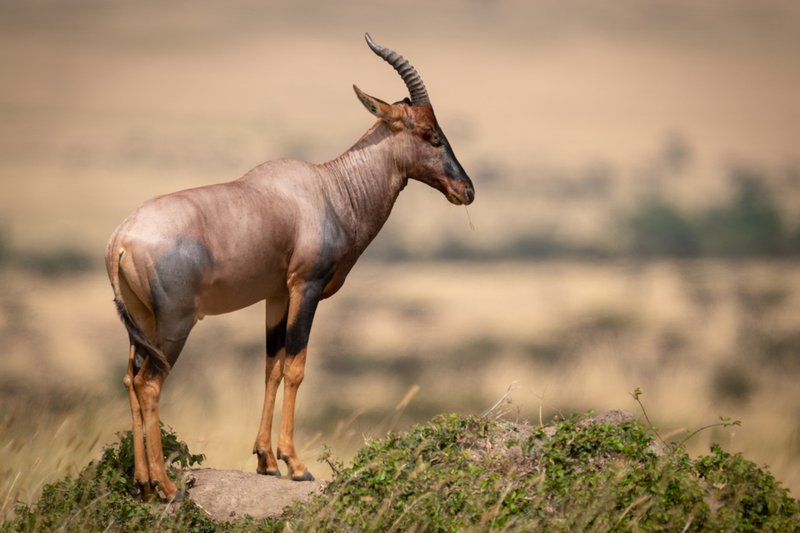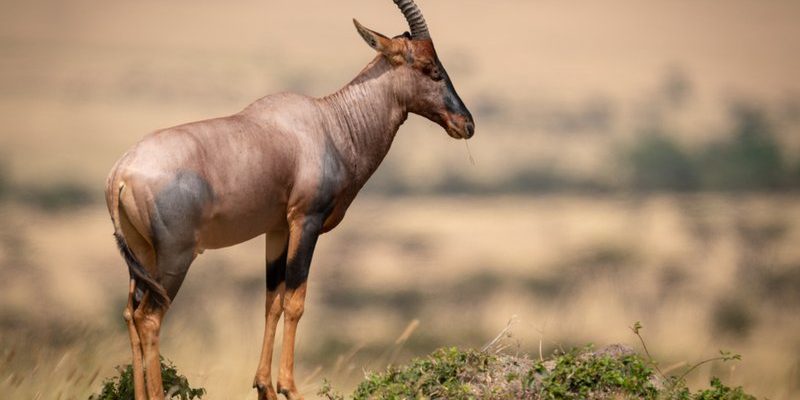
So, what makes the topi so special? From its striking appearance to its interesting behaviors, there’s a lot to unpack. In this article, we’re diving into ten fascinating facts that showcase the topi’s uniqueness. Get ready to be amazed!
1. Unique Physical Appearance
One of the first things you’ll notice about the topi is its distinctive appearance. These antelopes have long legs, a sleek body, and a coloration that varies from a rich reddish-brown to a golden hue. The darker patches on their bodies create a contrast that’s hard to miss. Their faces feature long, slender noses and large eyes that give them a curious gaze.
Honestly, they look like they were designed by an artist who wanted to create the perfect savanna animal. This striking appearance isn’t just for show; it plays a crucial role in their survival. Their colors help them blend into the tall grasses of their habitat, making it easier to evade predators.
Oh, and let’s not forget about their horns. Both males and females have them, but the males’ horns are typically longer and curve backward. This feature comes in handy during mating season when they engage in headbutting contests to impress potential mates.
2. Skilled Jumpers
You might be wondering how topis manage to escape predators in the wild. Here’s the thing: they are incredibly agile. Topis can leap up to three meters in the air! This skill isn’t just for show; it’s a key survival tactic. When a predator is near, they can quickly spring away, darting through the grassland with ease.
Their jumping ability also makes them excellent at navigating the uneven terrain of the African savanna. With powerful legs, they can clear obstacles effortlessly, allowing them to reach safety quickly. Watching a group of topis bound across the plains is truly a sight to behold; it looks like a well-choreographed dance.
This impressive agility is part of what makes the topi such a resilient species. They can adapt to various habitats in their search for food and safety.
3. Fascinating Social Structures
Topis aren’t just lone wolves (or, in this case, lone antelopes). They live in social groups known as herds. These herds can vary in size, from a few individuals to more extensive groups, especially during the mating season. In these herds, you’ll find a mix of males, females, and young topis.
But here’s where it gets interesting: male topis are quite territorial. They often establish dominance through displays of strength, like those headbutting contests we mentioned earlier. Once they’ve established their territory, they will defend it vigorously from other males. This territory is critical during the breeding season since females are attracted to males with the best territories.
However, females tend to have a slightly different social structure. They often form small groups with their offspring, and they’re much less territorial than males. This dynamic creates a fascinating social system where roles are clearly defined, helping them thrive in their environment.
4. Unique Mating Rituals
When it comes to mating, topis have some pretty interesting rituals. During the breeding season, males become highly competitive. They often engage in displays of strength to attract females, showcasing their vigor and fitness. One common behavior you’ll see is the male establishing a “lek,” which is essentially a territory where he can perform and attract females.
As part of their courtship, males will often puff out their chests, stomp their feet, and even make grunting sounds to show off. It’s like a nature documentary, where you can see who can out-dance the other for a mate!
After a female picks her partner, they will mate, and the female will carry her young for about seven months before giving birth to a single calf. These calves are vulnerable right after birth, but they quickly learn to keep up with the herd, thanks to their mothers’ guidance.
5. Diet and Feeding Habits
What do topis eat? Well, they are grazers, primarily munching on grass. You could say they have a “grass buffet” to choose from, enjoying tender shoots and fresh greens that spring up after the rains. Their unique digestive systems allow them to process tough plant materials, making them efficient foragers.
Interestingly, topis often prefer short, nutrient-rich grasses. They’ll move around their territory in search of the best spots to graze, which helps them avoid overgrazing an area. This behavior benefits the ecosystem by allowing grasslands to recover and thrive.
You might also notice that they tend to feed in the early mornings and late afternoons. This timing helps them avoid the heat of the day, and it’s a smart strategy to stay hydrated and energized.
6. Habitat and Range
Topis are primarily found in sub-Saharan Africa, specifically in open grasslands, savannas, and even lightly wooded areas. They thrive in places where they can easily see predators approaching, which is crucial for their survival.
Their range extends across several countries, including Kenya, Tanzania, and parts of Uganda. You’ll often spot them in national parks, where they can roam freely without the threat of habitat destruction.
Interestingly, while they prefer the grasslands, topis are also quite adaptable. They can adjust to various environments as long as food and water are available. This flexibility is one reason why they continue to thrive in a changing world.
7. Communication Styles
Now, let’s talk communication. Topis have a range of vocalizations and body language cues they use to convey messages to one another. You might hear grunts, snorts, and even snorts of alarm when they sense danger.
Body language plays a big role, too. When a topi feels threatened, it will raise its head high, alerting others in the herd of potential danger. On the flip side, when they’re feeling relaxed and safe, they’ll graze and socialize comfortably.
This instinct for communication is crucial for living in a herd. By keeping each other informed about the presence of predators or other threats, topis increase their chances of survival. It’s a classic case of “teamwork makes the dream work” in the animal kingdom!
8. Conservation Status
As fascinating as topis are, they face challenges in the wild. Their population has declined over the years primarily due to habitat loss and poaching. While they still roam in the wild, many conservationists are working to protect their habitats to ensure future generations can enjoy these marvelous creatures.
You might be wondering how you can help. Supporting wildlife conservation efforts and protecting natural habitats is an excellent start. Many organizations focus on educating communities about the importance of wildlife and how everyone can contribute to conservation.
By protecting the savanna ecosystems where topis live, we’re not just saving one species; we’re preserving the entire environment. Every little bit helps!
9. Topis vs Other Antelopes
The topi belongs to a group of animals known as antelope, but it’s distinct from many of its relatives. For instance, compared to a gazelle, which is more slender and graceful, the topi has a stockier build and a different social structure.
You might also notice that while topis are primarily grazers, some antelopes are browsers, meaning they prefer eating leaves, shrubs, and bushes. This difference in diet influences where and how these animals thrive in their respective habitats.
Understanding these differences helps highlight the variety of adaptations that have evolved in these species, enabling them to survive in the wild. Each type of antelope plays a unique role in the ecosystem, contributing to the intricate balance of life on Earth.
10. Cultural Significance
Lastly, the topi holds cultural significance in various African communities. In some regions, it has become a symbol of the African wilderness, representing the beauty and richness of wildlife.
You’ll find topis featured in local stories, art, and even tourism campaigns, which help raise awareness about the importance of conservation. By learning about this fascinating antelope, we can appreciate not just its ecological role but also its cultural impact on African heritage.
These cultural connections remind us that protecting wildlife like the topi is about more than just the animals themselves; it’s about preserving our shared history and the natural world as a whole.
In conclusion, the topi might not be as well-known as some other African animals, but it’s full of surprises and intriguing facts. From its impressive jumping ability to its fascinating social structures, the topi showcases the beauty and complexity of the animal kingdom. So the next time you think about African wildlife, remember the topi—it’s more than just another antelope; it’s a remarkable creature that’s worth exploring!

